Star Trek: Deep Space Nine is twenty years old this year. To celebrate, I’m taking a look at the first season. Check back daily for the latest review or retrospective.
Well, that was actually pretty satisfying. Star Trek: Deep Space Nine has probably the most satisfying debut season of any of the Star Trek spin-offs. While the show’s first year can’t quite measure up to the very first season of Star Trek ever produced, it can hold its head high among the spin-offs. Although I will concede that the bar isn’t exactly high when it comes to measuring the first year of the tie-in television shows.
When I began a recent re-watch of Star Trek: The Next Generation, I was glad to finish the show’s rocky first season. It was a slog, like the work one has to put in before delving into “the good stuff.” I recently picked up the blu ray of the first season of Star Trek: Enterprise. While there are a couple of nice episodes, there are quite a few I’d forgotten entirely because they were so bland. There are more I would like to forget. Star Trek: Voyager‘s first season is the single largest missed opportunity in the history of the franchise.
So Deep Space Nine‘s first year doesn’t have to do that much beyond “not sucking” in order to earn the coveted title of “best pilot season of a Star Trek spin-off.” However, as I watched the season, I was continually impressed with the quality of work done. There are a few duds (and a few classics), but the first year demonstrates remarkable insight into what is unique about the show’s premise. It doesn’t always have the courage to follow through on that promise, but it at least acknowledges it.
To be fair, Deep Space Nine arrived at a very different time than The Next Generation. It wasn’t reviving a long-dead television brand, transitioning a franchise from the big screen to the small screen. However, by the time that Deep Space Nine entered production, The Next Generation had become a critical and a commercial success. Star Trek had gone from being a piece of cult science-fiction to a certified television phenomenon.
Indeed the final season of The Next Generation, airing concurrently with the second season of Deep Space Nine, earned a coveted Best Drama nomination at the Emmys. It’s a nomination that I imagine serves as a cumulative acknowledgement of the show’s contribution to pop culture. Because I really don’t want to live in a world where the final season of The Next Generation is the most Emmy-worthy Star Trek spin-off season on its own merits.
So it’s unfair to compare the first season of Deep Space Nine to that of The Next Generation. The creative crew weren’t trying to rediscover an art form lost for over a decade, trying to resurrect a franchise. Instead, they were trying to apply what they had learned from over years working on a successful spin-off to another show within the same universe. It was trying to figure out what aspects of the parent show did or didn’t work in this new setting.
In discussing the first year of The Next Generation, I pondered whether any Star Trek television show could survive in today’s current competitive television market, even with the success of the 2009 Star Trek reboot and Star Trek: Into Darkness. Based on the evidence before us, it seem that Star Trek shows tend to take a while to find their feet. One wonders if, in today’s ratings-driven reality, The Next Generation could have made it to the third season, the point where the show really came into its own.
This first season is pretty solid. It ends on two of the best episodes of Star Trek ever produced. However, we’re still talking about seventeen weeks of very variable quality before we reach this point. Deep Space Nine was a show that had shed half its audience between the first and last episodes of the season. Audience ratings should never be treated as an arbiter of quality (Deep Space Nine never rated as well as The Next Generation), but they do determine a show’s viability.
It’s interesting to wonder if a modern show could survive two back-to-back misfires like The Passenger and Move Along Home this early in the run. The first season of Deep Space Nine demonstrates remarkable potential – Duet and In the Hands of the Prophets count as two of the best Star Trek episodes ever produced – but it’s also clear that the show isn’t yet fully formed. I’d argue, even as a fan of the show, that Deep Space Nine didn’t really demonstrate what it was consistently capable of until the third (or fourth) season.
There are reasons for that, of course. Even in this first season, you can sense a bit of hesitation from the producers. There are hints that the production staff might be getting some cold feet. Is it possible for a spin-off to be too different? Despite the fact that Deep Space Nine was created to be something markedly different from The Next Generation, the show tries to hedge its bets. Realising that a space station can’t really do the same sort of exploration as a starship, the show introduced the wormhole.
The wormhole eventually become something quite unique, and Emissary tries to cultivate its own identity by casting it as the “Celestial Temple of the Prophets.” However, for a lot of the show’s first two seasons, before the writing staff firmly committed to what was behind it, the wormhole was a convenient way of bringing exploration to Deep Space Nine. Shows like Captive Pursuit, Move Along Home and even The Forsaken use the portal as a means to conveniently generate plots that could easily be set on the Enterprise. Battle Lines and Vortex also use the wormhole as a means of allowing the cat to explore “strange new worlds.”
According to Ira Steven Behr, who would take over the show in its third season, there was a lot of nervousness of the series in the early days:
It wasn’t until the end of the first season, with Duet and [In the Hands of the Prophets], I think … that we really started… and there were some other good episodes at the beginning and throughout, but it was… and then the studio got freaked out and said, “Should we put engines on the space station and fly it through the wormhole? Do we need the character of Bashir?”
So, you know, it really did seem to be on a knife’s edge at one point, but luckily we were able to weather that.
To be fair to Behr, you can see a lot of groundwork laid in the show’s first year with an eye to the future. Despite its reputation, Deep Space Nine wouldn’t truly embrace serialisation until its fifth season. (And, even then, it did not opt for the approach exclusively.) However, there are faint hints of it even here.
While the first year is populated with stand-alone adventures, it’s clear that a lot of these storylines are seeding plot points that would pay-off down the road. (Even if in some cases – like Vortex or Battle Lines – it seems like the writers weren’t quite sure how they were going to pay-off at that point.) Vortex would lead to The Search and Battle Lines set up In the Hands of the Prophets.
More than that, though, there is a sense that the show was taking care to set up what it saw as long-term dynamics. The Storyteller paved the way for the friendship between Bashir and O’Brien. Nog and Jake have recurring subplots in stories like The Storyteller and Progress which are designed to help their relationship grow organically. Unlike The Next Generation, where it takes for granted that these people are all friends because the Enterprise is the perfect workplace, Deep Space Nine generally builds these threads from the ground up, which gives a more satisfying experience.
It’s interesting that so many of the show’s recurring and supporting cast appear so early, just as it’s interesting that so few actually recur. The first season seems more concerned with placing the pieces on the board than with beginning to put them in motion. Garak appears only once here, in the second episode. Despite this, he’ll become an essential part of the show’s fabric. Gul Dukat, who would evolve into a major player, only appears twice. His second appearance, in Duet, serves as little more than handy exposition. The season also introduces Winn Adami and Bareil Antos in its final episode.
The second season would put these characters to better use. Bareil and Winn would play significant roles in the opening three-parter. Dukat and Garak would get much to do in Cardassians, and Garak would even get an entire episode dedicated to his back story. However, for now, the first season takes its time, refusing to rush things. Instead, there’s a sense of relatively organic (but planned) growth, rather than a desire to force things along to fit a schedule.
And it works. By the end of the first season, we have a firmer grasp on these leads than we did of the characters in The Next Generation at the same point. We understand where each is coming from and the role that they play in the ensemble. It helps that Deep Space Nine tends to split the cast off into sub-groups for better developments. Barring his occasional subplots with Nog, Jake primarily exists as an extension of Sisko. Quark has an extended family on the station.
Even the regulars tend to cluster. Bashir interacts with Dax and O’Brien more than Quark or Odo. Odo tends to spend more time with Kira and Quark than O’Brien or Sisko. It creates the impression of an organic dynamic, one where all characters get along, but some get along better than others. It helps that Deep Space Nine is the first show where we have a real sense of history between the characters. The cast of The Next Generation might as well have all met at Encounter at Farpoint. While Kirk’s crew had evidently been together a while by Where No Man Has Gone Before, there’s never too much a sense that any of the regulars have history beyond what the present episode requires.
In contrast, Sisko has known Dax a life-time. (More in her case.) Kira, Odo and Quark all remember the Occupation in a way that the Starfleet officers can only imagine. O’Brien has a bit of character history developed with a completely different ensemble on a completely different show. It’s a fantastic approach to character. Voyager would tease this sort of thing with various Maquis members (Chakotay and Paris, Janeway and Tuvok), but it never really worked to the same extent.
At the same time, some of the characters are problematic. I love the role that Bashir plays within the ensemble, but he’s underdeveloped as a character in his own right. The fact that The Passenger counts as his character-centric story here illustrates just how troubled he is. The show would eventually figure out how to tell a “Bashir story” in its fourth season, but – for the moment at least – the character works much better as part of a larger group. The Storyteller is a far stronger story than The Passenger, and plays to Bashir’s strengths as a supporting cast member rather than making him the centre of the story and trying to figure out what to do with him.
Dax is also troublesome. Part of this is down to the fact that Terry Farrell seems a little uncomfortable in the role. I can see what she’s trying to do – essentially playing Dax as an old man in a young woman’s body – but her stoic performance doesn’t really work. After all, Odo has already cornered the market on whole “Star Trek outsider” within the Deep Space Nine ensemble. Farrell would get a bit more relaxed in the role into the second season, as the character loosened up a bit. You can already see that shift in episodes like If Wishes Were Horses… or Dramatis Personae.
However, the writers also have problems with Dax. She’s a great concept for a supporting character, and a nice image – she is a character with several lifetimes of experience wrapped up in a young body. It’s fun to see Sisko treat this young woman he only recently met as his mentor, and it’s nice to see the stereotypical wisened insights come from the most unlikely source. It also raises a host of interesting questions about how other characters relate to her.
However, this doesn’t make her exceptionally interesting when the plot focuses on Dax herself. Mainly because a lot of Dax-related plots are going to be more interested in the slug in her belly than the character as a whole. It turns Jadzia Dax into a macguffin. We saw that in Dax and we’ll see it next year in Invasive Procedures, both stories where it seems like Jadzia has nothing to contribute to the plot except an attractive place for storing a symbiote.
Unlike Bashir, Jadzia Dax wouldn’t really consistently improve at any point in the show’s near future. The series would produce a number of strong Dax-centric episodes (like Playing God, Facets and Rejoined), but there was never a moment where it seemed like the character just “clicked” and the writers suddenly “got” what to do with her. Although the final season was a little overcrowded and Ezri’s presence hardly helped, I do think that the seventh year of Deep Space Nine finally managed to make good use of the Dax character.
This suggests that Jadzia simply started the show in the wrong place. Ezri’s attempts to come to terms with her joining and to figure out her confusing personal situation was a lot more compelling than any of Jadzia’s personal drama from the show’s first two years. When we meet Jadzia in Emissary, she already knows what’s what. She has no internal problems, no character arc in front of her. She is at peace. That’s obviously great for her, but doesn’t lend itself well to her development as a character when she’s surrounded by dysfunctional characters like Bashir, Odo, Sisko and Kira. Quite frankly, Jadzia had nowhere to go.
The show also has a slight problem with Quark. This is a lot easier to forgive, because Quark tends to work quite well when the writers focus on him. The Nagus is a delight from the show’s troubled first year, and you can see people like Ira Steven Behr making a concerted effort to push the Ferengi away from the “unfunny comic relief” role they’d found themselves in from almost immediately following their introduction.
I’m actually reasonably fond of most of the show’s “Ferengi” episodes, considering them a dysfunctional contrast to the “Klingon” episodes on The Next Generation. It’s nice to see the writing staff making a conscious effort to fix something that is quite obviously broken. It is certainly something the Voyager staff could have learned before abandoning any number of interesting premises after they failed to work perfectly immediately.
However, Quark runs into a bit of bother when he’s used as a cheap plot device. Like the wormhole is lazily used to provide the show with an excuse to go adventuring in the finest Star Trek tradition, Quark is often used as a lazy way of getting something shady to happen. Sometimes this works fairly okay (the botched robbery in Vortex is hardly the character’s finest moment, but it’s not too unbelievable), but it’s often quite frustrating.
Treating Quark as a money-hungry idiot whose greed often endangers the station is storytelling crutch. It ranks with “killing the redshirt” as a means of increasing dramatic tension. Not only does this make Quark seem like an idiot (how did he not see that backfiring?), but it also makes Sisko and Odo seem like idiots (how come he’s still on the station?). More than that, it undermines a lot of Behr’s attempts to develop the Ferengi as absurd hyper-capitalists instead of greedy morons.
Still, despite the sizable flaws, there’s a lot to like here.I’ve always felt that Deep Space Nine adheres closest to the Star Trek philosophy. There are many fans who would disagree with that assessment, arguing the show is too dark or too cynical to be “proper Trek.” There are certainly elements of that darker shade of Star Trek here, the suggestion that perhaps everything won’t always be magically better in the future. Those elements would only grow stronger in the years that followed.
The Maquis would introduce us to people who felt abandoned by the Federation. The Dominion War would put absolutely everything the Federation stood for under threat. On a superficial level, I can see why people might respond to these deviations from the Federation as established in The Next Generation. I’d argue that they are, however, surprisingly in keeping with the Federation of the original Star Trek. Of all the spin-offs, Deep Space Nine is the one most rooted in the spirit of the 1960s television show.
It’s hard to imagine Gene L. Coon writing for The Next Generation or Voyager, but he’d feel right at home on Deep Space Nine. That doesn’t mean that Deep Space Nine is incompatible with Roddenberry’s utopian vision. It just realises that it is – to quote Behr – “easy to be a saint in paradise.” It isn’t that hard for Picard to be a superior human being, as he is in an environment where he could never want for anything that isn’t easily available to him. He doesn’t fear going hungry or cold. He doesn’t have to worry about the collapse of the Federation in any plot extending beyond two consecutive episodes.
More than that, though, The Next Generation could be exceedingly anthropocentric. Human values are the only values perceived to be worth anything. The series would develop a grudging respect for the Klingon way of life, but the Romulans were portrayed as scheming cowards for wanting to live outside Federation interference. The Ferengi were treated as monster because they still had a currency. The show’s resident outsider character desperately sought to become human, which is extremely flattering to us. (As more than one guest character observed.)
Deep Space Nine, on the other hand, dares to suggest that alien values are not inherently hostile, and that different cultures can co-exist without having to assimilate. This is the only Star Trek show where the alien characters in the main cast (let alone the recurring cast) would come to heavily outnumber the human characters. The very design of the station reflects Cardassian philosophy. Several times in the series (Move Along Home and Vortex), aliens from the Gamma Quadrant are more interested in meeting Quark than they are in meeting Sisko.
Keiko’s school becomes a major issue in the series finalé, as Vedek Winn objects to the teaching of a Federation-centric cirriculum. Although Winn is a fanatic, even Sisko concedes she has a point. More than that, though, this isn’t the first time we’ve seen Keiko’s school criticised for teaching exclusively human values. In The Nagus, Rom pulled his son out of the school because it would not help Nog’s advancement in Ferengi culture. This decision meant that Nog had to be schooled by Jake, rather than receiving a proper and well-rounded academic education.
Indeed, Sisko is repeatedly shown to be racist against the Ferengi. Not in an overly obvious way. He doesn’t use slurs or anything out-of-character like that. He just doesn’t want his son hanging around with “that Ferengi boy.” In The Nagus, Jake and his dad argue about the way the Federation treats the Ferengi. Sisko insists they never found any common ground. Watching The Next Generation, you might be convinced that it is because humans dismiss the Ferengi. It’s telling Jake forges a deeper bond with Nog in a few episodes than any member of The Next Generation cast did with any Ferengi in the entire show.
Deep Space Nine does challenge the underlying assumptions of Star Trek, but in doing so it actively evolves the franchise. It examines what these abstract values mean in circumstances that aren’t ideal. In a way, despite its stationary setting, Deep Space Nine boldly went where no Star Trek spin-off had gone before or since. It subjected the franchise’s values to a lot of harsh scrutiny, but only so that they could be appraised and applied. There’s no delivering a speech to the natives before warping off and forgetting about the planet of the week. For better or worse, these people and these ideologies have to work together. And Deep Space Nine optimistically insists that they can.
There are other nice touches. Avery Brooks’ performance style can be quite polarising, but I really like his approach to Sisko. Sisko is probably exactly what the third Star Trek captain should be, the perfect half-way point between Patrick Stewart’s hyper-evolved Shakespearean commander and Kirk’s no-nonsense act-on-impulse leading man. Brooks keeps the scenery chewing under control in this first season, although I do love when he goes “full Shatner” in Dramatis Personae.
It’s worth noting that even some of the misses in this first season were worthy attempts to try something new. I tend to be quite forgiving when a show is willing to try something that it hasn’t done before, even if the results are unspectacular. It’s very hard to forgive The Passenger, but I do appreciate that Move Along Home was trying to do a campier version of Star Trek than we’ve seen since 1969. The Forsaken might be a hybrid of familiar Star Trek tropes, but it’s one of those rare episodes that treats Lwaxanna Troi as her own character rather than as a mean joke about middle-aged women.
And it’s worth noting that a lot of it worked surprisingly well. Duet and In the Hands of the Prophets deserve to be discussed along with the very best of Star Trek. Even earlier than that, though, Progress offered a hint of what the show was capable of. The season’s subplots were particularly strong, and character dynamics were even strong enough to carry middling fluff like The Storyteller. Even a story like Dramatis Personae (powered by pretty generic Star Trek clichés) was told in a style that would not have been possible on the other spin-offs.
It is clear that the writers knew they weren’t writing for The Next Generation and acknowledged they had a different dynamic. That is – without seeming too harsh – more than can be said for the first seasons of Voyager or Enterprise. That’s the real strength of this first season, the fact that so much time and effort is expanded to give the show its own identity which isn’t just “The Next Generation on different sets.”
It didn’t always work out. There are times in this first year when the show stumbles and falls. It even tries a couple of times to emulate its more successful older sibling, losing its distinctive voice in the process. Trying to out-Next-Generation The Next Generation was a foolish move, particularly since people could just tune into a show doing the same sorts of plots much better. There are times in the season where you can almost imagine that argument playing out in the writers’ room or among the producers. The hesitation, the nervousness, the insecurity.
I can’t blame the producers for worrying about a show like this, and I understand why there was that very clear temptation to just do “The Next Generation Lite.” However, I respect the show for fighting that impulse, even if it wasn’t always successful during its first two years. The first year of Deep Space Nine isn’t perfect. It has its warts. I suspect, had the show run a full twenty-six episodes, it might have a few more. However, it’s also trying to do something new and exciting.
Although it’s not consistently hitting the ball out of the park at this point, at least we know that it can.
You might be interested in our reviews of the first season of Star Trek: Deep Space Nine:
- Emissary
- Supplemental: Terok Nor – Day of the Vipers by James Swallow
- Supplemental: Prophecy & Change – Ha’Mara by Kevin G. Summers
- Past Prologue
- A Man Alone
- Babel
- Captive Pursuit
- Q-Less
- Dax
- The Passenger
- Move Along Home
- The Nagus
- Vortex
- Battle Lines
- The Storyteller
- Progress
- If Wishes Were Horses…
- The Forsaken
- Dramatis Personae
- Duet
- In the Hands of the Prophets
Filed under: Deep Space Nine | Tagged: Captive Pursuit, deep space nine, games, Ira Steven Behr, Move Along Home, Next Generation, science fiction, Star Trek Into Darkness, Star Trek Next Generation, star trek: deep space nine, star trek: the next generation, star trek: the original series, StarTrek, Television, video games |

















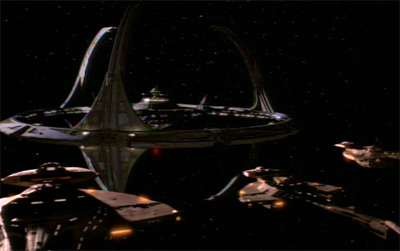


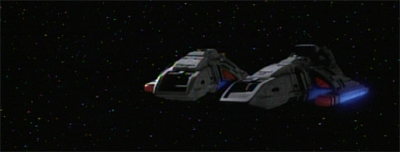

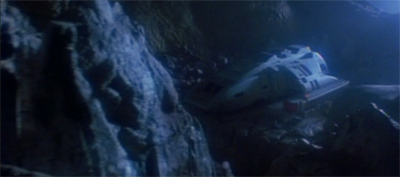




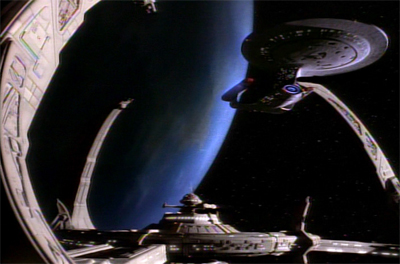
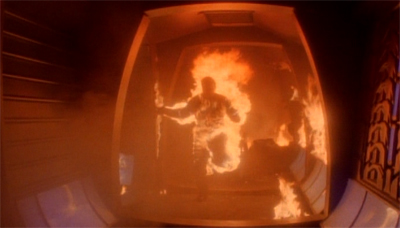
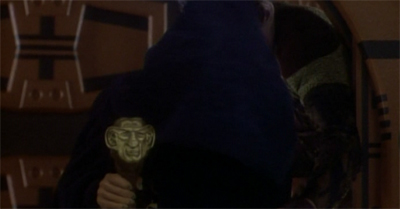

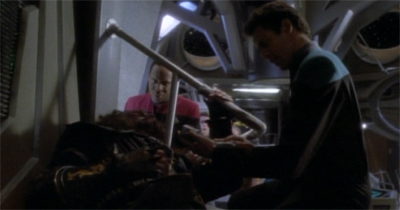

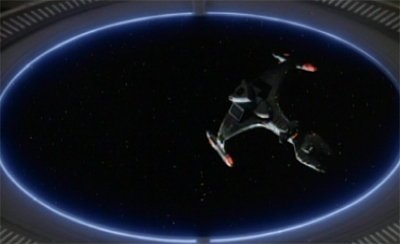







Not a bad season season, I suppose, but highly variable. Here’s how I’d rank them.
1. “Duet”-5/5
2. “Progress”-4.5/5
3. “In the Hands of the Prophets”-4.5/5
4. “Dax”-4/5
5. “Captive Pursuit”-3.5/5
6. “Emissary”-3/5
7. “Past Prologue”-3/5
8. “The Nagus”-3/5
9. “The Forsaken”-3/5
10. “Dramatis Personae”-2.5/5
11. “Vortex”-2.5/5
12. “Battle Lines”-2/5
13. “A Man Alone”-2/5
14. “Babel”-2/5
15. “The Storyteller”-1.5/5
16. “Q-Less”-1.5/5
17. “If Wishes Were Horses”-1.5/5
18. “The Passenger”-1.5/5
19. “Move Along Home”-0.5/5
Interesting. The Nagus and Dramatis Personae would probably be quite a bit higher for me; the underrated episodes of the season. I’d probably swap the last two as well.
Allamaraine, count to four,
Allamaraine, then three more,
Allamaraine, if you can see,
Allamaraine, you’ll come with me…..
Oh, and whoops: I’m Joe Y. I go by Iceman on Jammer’s reviews :).
Pleased to meet you Joe Y/Iceman!